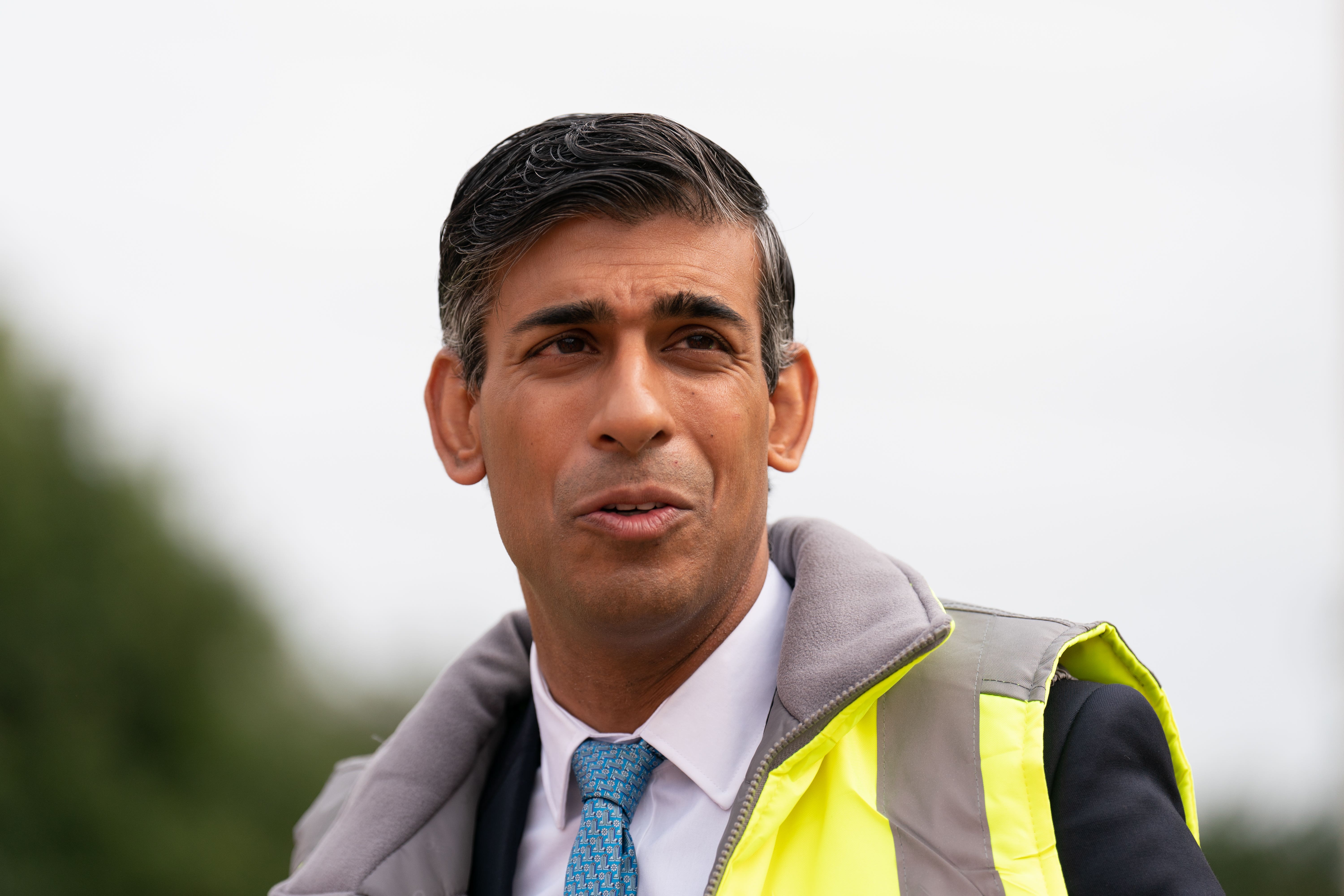
UK PM Rishi Sunak Refutes Accusations of Inaction Regarding the Schools Concrete Crisis
On Monday, UK Prime Minister Rishi Sunak firmly denied allegations that he had reduced funding for a school refurbishment initiative, even though he was reportedly aware of the potential hazards associated with the use of deteriorating concrete in these construction projects. Sunak’s response came amid mounting accusations and concerns surrounding the school refurbishment program’s efficacy and safety.
Despite the increasing scrutiny, Sunak remained resolute in his rejection of the claims, asserting that the government’s commitment to education and infrastructure remained unwavering. The controversy over the allegedly compromised construction materials further intensified the public discourse surrounding government spending priorities and the importance of ensuring the safety and quality of educational facilities in the UK.
In a significant and concerning development, 104 schools and colleges constructed using Reinforced Autoclaved Aerated Concrete (RAAC) have been issued a directive to delay the reopening of their buildings and classrooms this week. This decision has been made in response to the growing apprehensions regarding the structural integrity of these educational institutions, as there is an elevated risk of potential collapse.
This precautionary measure underscores the paramount importance of prioritizing the safety and well-being of students, educators, and staff, as authorities work diligently to conduct thorough safety assessments and implement essential repairs to ensure the structural stability of these facilities.

The directive serves as a stark reminder of the critical need for rigorous oversight and quality control in construction projects, especially those involving public infrastructure and institutions. It also highlights the pressing concerns within the education sector regarding the condition of school buildings and the imperative to invest in the maintenance and safety of these structures to provide a secure learning environment for all.
The directive issued by the Department for Education has come at an exceptionally inconvenient time, coinciding with the commencement of the new term in England. This unexpected development has left teachers and educators in a frantic scramble to secure alternative spaces for the instruction of thousands of pupils. The abrupt need to find suitable teaching environments on such short notice poses a considerable logistical challenge for educational institutions, adding an extra layer of complexity to the already demanding task of ensuring uninterrupted learning for students.
Despite the mounting controversy, Prime Minister Rishi Sunak has vehemently denied the claims put forth by a former senior official within the ministry. The former official alleged that Sunak, during his tenure as finance minister, deliberately shelved a funding request aimed at the crucial task of rebuilding more schools. Sunak’s staunch denial emphasizes his commitment to upholding transparency and accountability in the realm of government finance, but it also sheds light on the ongoing debate surrounding the allocation of resources for educational infrastructure.

The dispute underscores the government’s complex challenge of balancing safety concerns in existing schools with the pressing need to expand and modernize educational facilities to meet the evolving needs of students and educators across the nation.
As this controversy unfolds, it prompts a broader discussion about the priorities of public spending, particularly in the context of education. The demands for safe and well-equipped learning environments must be weighed against fiscal constraints and other pressing national issues, posing a continual dilemma for policymakers striving to strike the right balance between immediate needs and long-term investments in the education sector.
Jonathan Slater, a senior civil servant at the Department for Education (DfE), has revealed a concerning disparity between the pressing need for school replacements and the available funding. According to Slater, the DfE estimated that as many as 400 schools annually required replacement, yet the department only secured funding for a fraction of that number, specifically 100.
Slater further highlighted that in 2021, during Rishi Sunak’s tenure as Chancellor of the Exchequer, funding was allocated for a mere 50 schools, underscoring the financial limitations that have constrained efforts to address the crucial issue of school infrastructure.

This revelation underscores the ongoing challenge facing educational policymakers in England, as they grapple with the stark contrast between the demand for modern, safe, and well-equipped schools and the financial resources allocated for their construction and refurbishment. It also raises questions about the prioritization of educational infrastructure within the broader spectrum of government spending and resource allocation, emphasizing the critical role of funding decisions in shaping the future of the country’s education system.
Prime Minister Rishi Sunak, in response to Jonathan Slater’s assertions, categorically refuted the senior civil servant’s claims, stating that Slater was “completely and utterly wrong.” Sunak maintained that the number of school replacements was in line with established policy over the preceding decade, suggesting that the funding allocation was consistent with past practices and priorities.
Furthermore, Sunak downplayed the gravity of concerns related to the cheap and lightweight form of concrete, which had been widely used in construction from the 1950s until the mid-1990s. He sought to diminish the extent of the problem stemming from this construction material, despite growing apprehensions about its shelf-life.

These concerns gained prominence in 2018 when a primary school in southeast England experienced a roof collapse without prior warning, shedding light on the potential risks associated with ageing infrastructure and the use of such materials in educational buildings. This incident has since served as a stark reminder of the importance of vigilant oversight and investment in maintaining the safety and quality of educational facilities.
Prime Minister Rishi Sunak contended that approximately 95 per cent of the roughly 22,000 schools in England remained unaffected by the crumbly concrete issue, which suggests that there could still be hundreds more schools potentially impacted by this structural concern. Moreover, there are growing concerns that the problem may extend beyond schools, as other public buildings constructed during the same period, such as hospitals and courts, may also face similar issues related to the use of deteriorating concrete.
This crisis involving crumbly concrete has become the latest challenge for Sunak’s Conservative government, which is aiming to extend its 13-year tenure in office, with a general election anticipated next year. In response, political opponents have criticized government ministers for not adequately preparing for this issue and for reducing funding allocated to replace Reinforced Autoclaved Aerated Concrete (RAAC) in the most severely affected schools. The situation highlights the broader challenges of managing public infrastructure, fiscal priorities, and the need for comprehensive planning to address critical issues in the education and construction sectors.
Education Secretary Gillian Keegan issued an apology for her candid and profane remarks, which were inadvertently caught on camera following a television interview on the subject of the crumbly concrete issue. In her comments, Keegan stated that she had “done a f***ing good job” in addressing the problem and criticized others for inaction, saying, “everyone else has sat on their arse and done nothing.” She acknowledged that her words were impromptu and acknowledged that her choice of language was unnecessary.

This incident underscores the high stakes and intense pressure that government officials often face when managing critical issues such as infrastructure safety and public perception. Keegan’s apology reflects an attempt to mitigate any potential backlash stemming from her remarks while emphasizing the ongoing importance of addressing the structural concerns in educational buildings.




